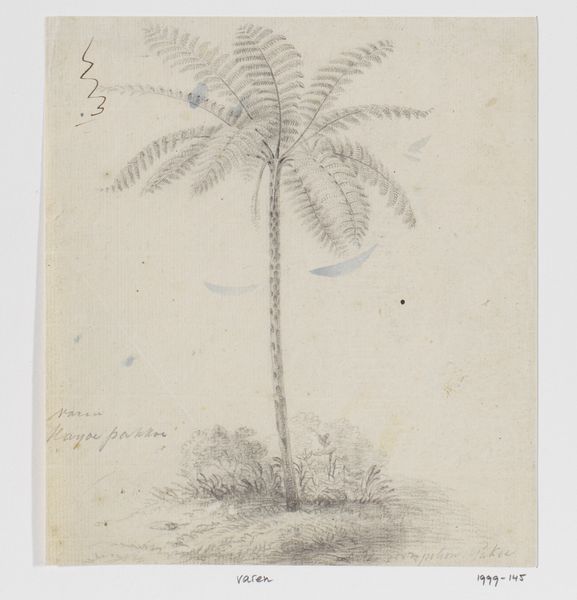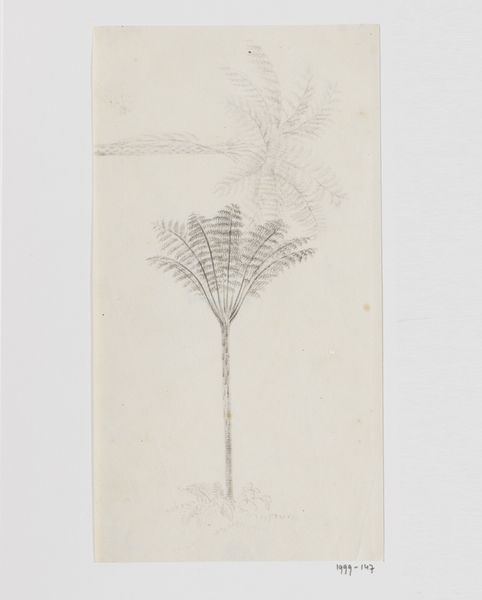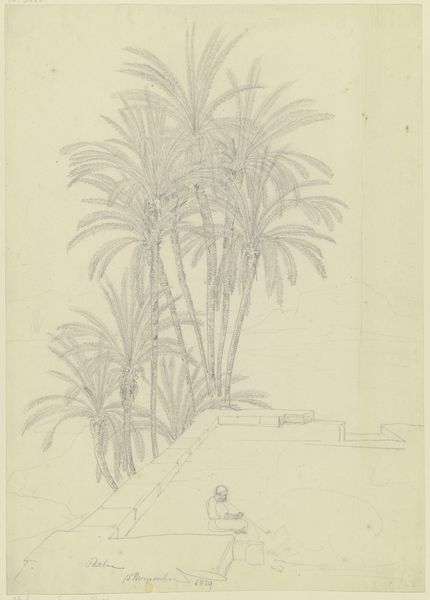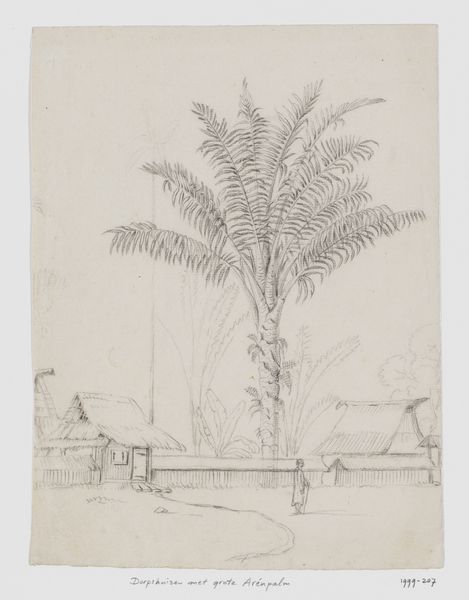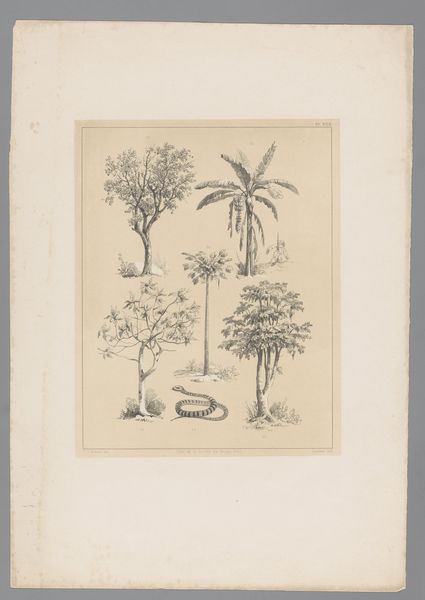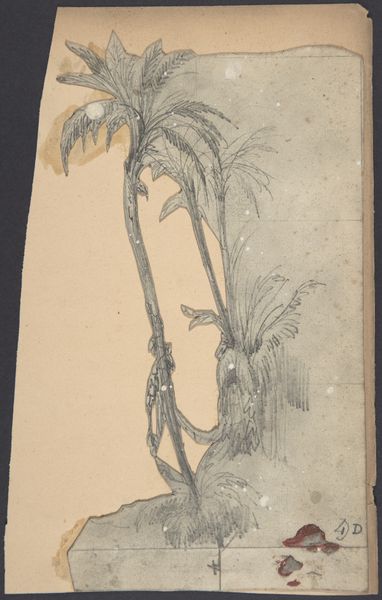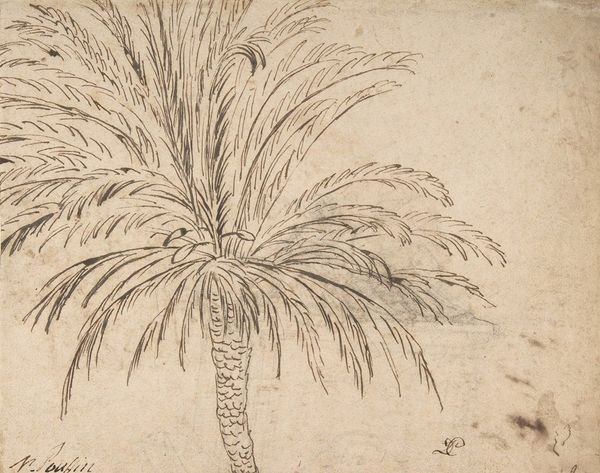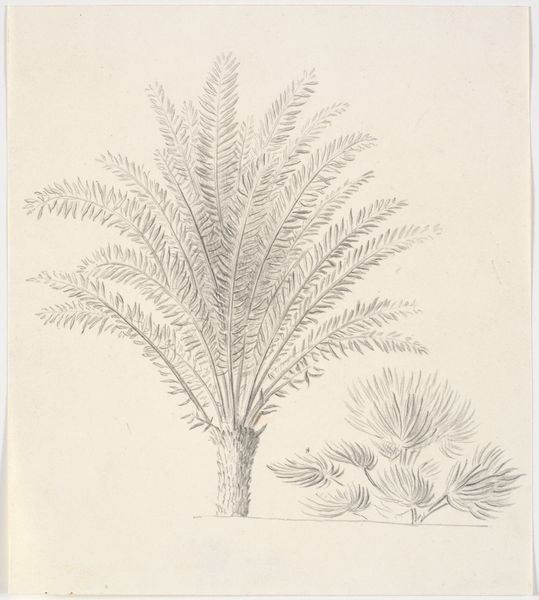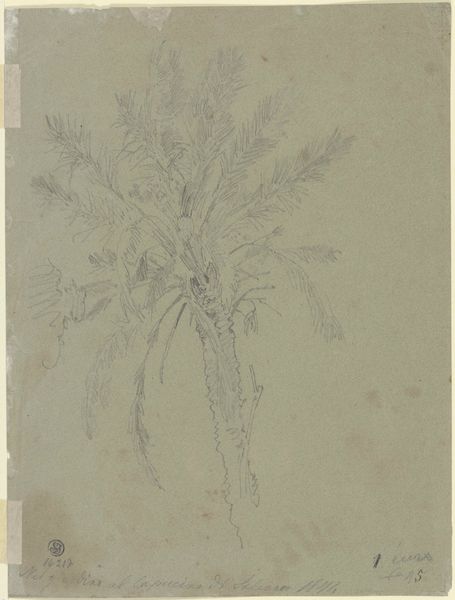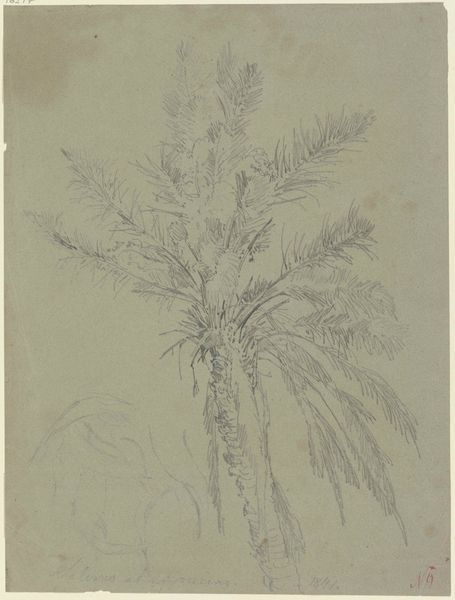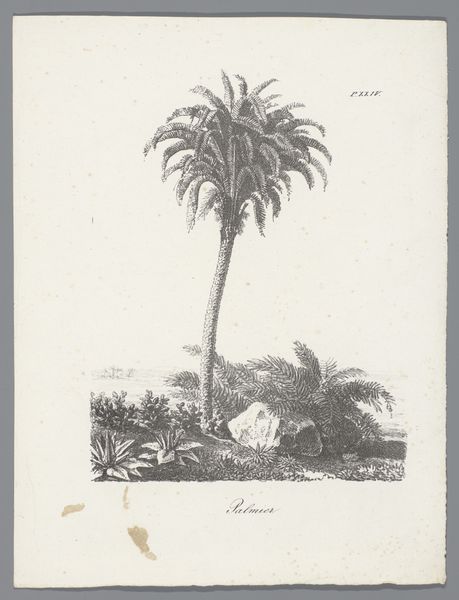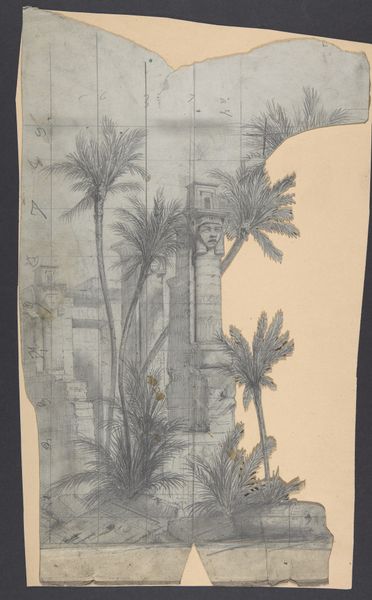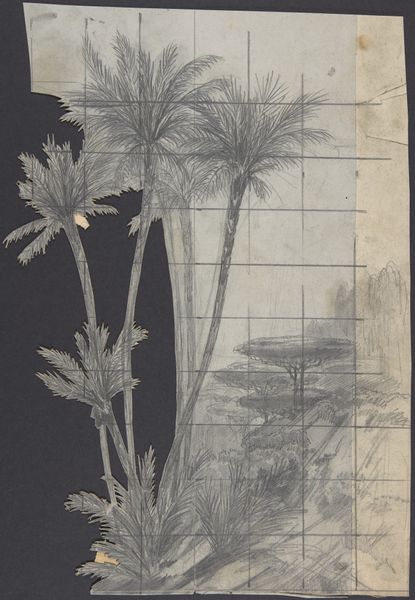
drawing, paper, pencil
#
drawing
#
organic
#
landscape
#
paper
#
pencil
#
line
#
realism
Dimensions: height 357 mm, width 234 mm
Copyright: Rijks Museum: Open Domain
Curator: Welcome! We're standing before "Sagopalm, Molukken," a drawing by Adrianus Johannes Bik, created sometime between 1816 and 1846. It's rendered in pencil on paper and currently resides in the Rijksmuseum collection. Editor: Immediately, I’m struck by the tree's solitariness, its incredibly slender form reaching up. The delicate, almost frail lines give it an air of vulnerability, a sense of existing in a void. Curator: Indeed. As a lone botanical specimen depicted with such detail, this sagopalm takes on a symbolic weight. Consider the Dutch colonial presence in the Moluccas during this period. A single palm tree becomes more than just flora; it represents exoticism, resource extraction, and perhaps the alienation inherent in colonial ventures. The tree isolated and centered takes on the qualities of a relic of sorts, imbued with history and bearing witness. Editor: And there's something deeply problematic about that colonial gaze. This image is less about celebrating the sagopalm and more about claiming possession, inscribing Dutch presence onto the landscape and solidifying dominance. Curator: Quite right. There’s an argument that landscapes, in particular, are often coded representations of power dynamics. Moreover, in some Indigenous communities, specific trees hold a profound connection to ancestral memory and continuity. Documenting it in this manner risks objectifying a living being and severing its deeper cultural roots. The drawing is a type of colonial portraiture, displacing the sacred meaning. Editor: Absolutely. Even the act of meticulously rendering the palm in pencil embodies a Western impulse to categorize and control the natural world. The artistic intervention feels invasive. Curator: Yet, it could also be argued that, even inadvertently, Bik has captured the essence of the tree's resilience, the palm reaching for sunlight. Sago palms also stand out among flora in that they often represent the only available sources of carbohydrate for people inhabiting low-land tropical regions. Editor: Yes, perhaps. I find myself wondering about the untold narratives surrounding this specific tree, its relationship with the community where it once stood. Curator: Food for thought, indeed! Thank you for allowing these new interpretations to sprout. Editor: Thank you. Examining this from an activist's point of view helps contextualize how artworks participate in complex conversations that linger to this day.
Comments
No comments
Be the first to comment and join the conversation on the ultimate creative platform.
